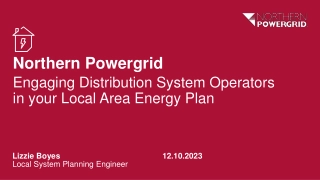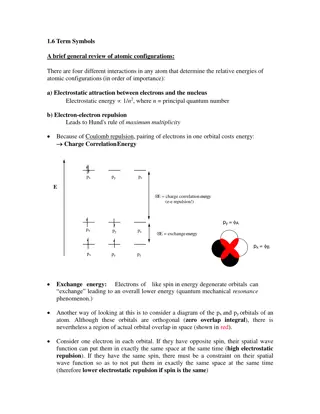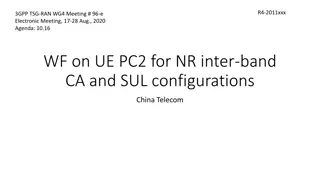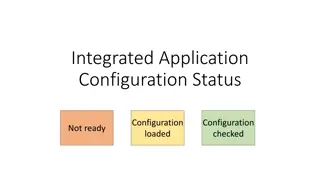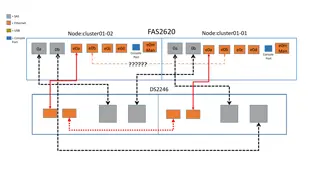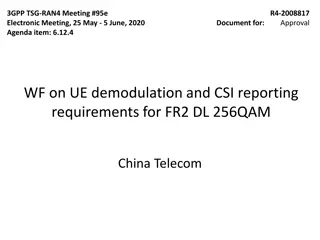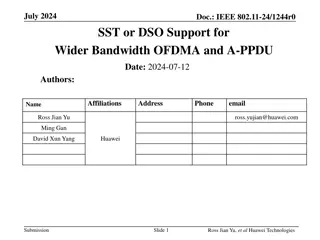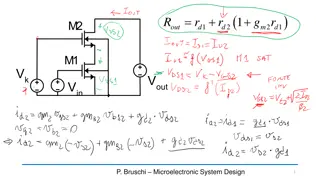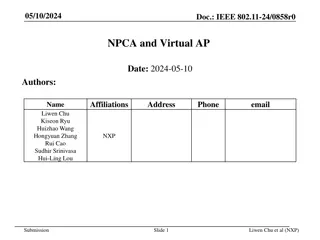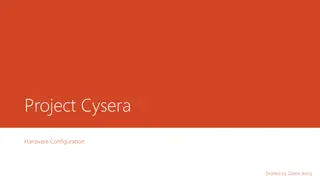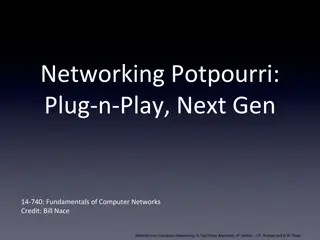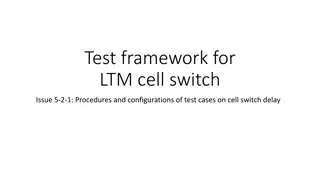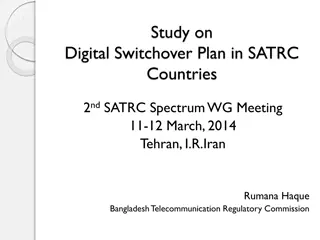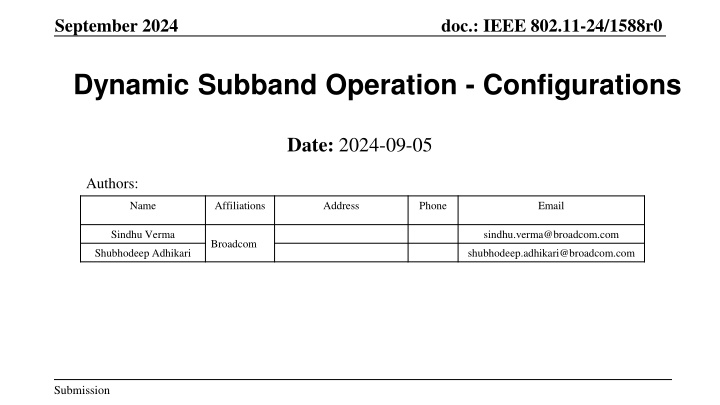
Dynamic Subband Operation Configurations in IEEE 802.11-24/1588r0 September 2024
Explore the dynamic subband operation configurations discussed in IEEE 802.11-24/1588r0 for September 2024. The presentation covers preferred combinations for non-APs receiving DSO allocations, operating bandwidths in 5GHz and 6GHz, definitions, motivation for proposed configurations, and details about DSO configurations in 5GHz. Simplify architecture, memory requirements, and scheduling options with these proposed DSO changes.
Download Presentation

Please find below an Image/Link to download the presentation.
The content on the website is provided AS IS for your information and personal use only. It may not be sold, licensed, or shared on other websites without obtaining consent from the author. If you encounter any issues during the download, it is possible that the publisher has removed the file from their server.
You are allowed to download the files provided on this website for personal or commercial use, subject to the condition that they are used lawfully. All files are the property of their respective owners.
The content on the website is provided AS IS for your information and personal use only. It may not be sold, licensed, or shared on other websites without obtaining consent from the author.
E N D
Presentation Transcript
doc.: IEEE 802.11-24/1588r0 September 2024 Dynamic Subband Operation - Configurations Date: 2024-09-05 Authors: Name Affiliations Address Phone Email Sindhu Verma sindhu.verma@broadcom.com Broadcom Shubhodeep Adhikari shubhodeep.adhikari@broadcom.com Submission
doc.: IEEE 802.11-24/1588r0 September 2024 Overview This presentation discusses preferred combinations for the following: Non-APs that can receive DSO allocations in a PPDU. Operating bandwidths of non-APs that receive DSO allocations in 5GHz and 6GHz. Submission Slide 2
doc.: IEEE 802.11-24/1588r0 September 2024 Definitions DSO PPDU: a PPDU that contains DSO allocations. Such a PPDU can additionally contain non- DSO allocations too. Primary sub-band: For a non-AP, the channel with bandwidth equaling its operating bandwidth and including the BSS primary channel is referred to as primary sub-band. DSO sub-band: For a non-AP, a channel with the bandwidth equaling its operating bandwidth outside of its primary sub-band where it can be allocated resources by the AP is referred to as DSO sub-band. DSO STA: A non-AP STA that supports the above DSO mechanism is referred to as a DSO STA. Submission Slide 3
doc.: IEEE 802.11-24/1588r0 September 2024 Motivation for the proposed DSO configurations (1) The motivation for the proposed DSO configurations is to simplify the architecture, memory requirements, sounding and scheduling options for DSO. Simplify AP scheduling by not downgrading a PPDU with DSO allocations from UHR to EHT/HE limit PPDUs with DSO allocations to only UHR non-APs. Enable the following simplifications to the DSO architecture: AP doesn t need to dynamically indicate the DSO sub-band to the non-AP. AP doesn t need to sound a non-AP on multiple bandwidths (DSO sub-bands) outside its operating bandwidth. Non-APs don t have to store channel state information for multiple bandwidths (DSO sub-bands) outside their operating bandwidth. A PPDU with DSO allocations can have only one DSO sub-band i.e only one DSO switching position outside its operating bandwidth Submission Slide 4
doc.: IEEE 802.11-24/1588r0 September 2024 Motivation for the proposed DSO configurations (2) Notes: The proposal is only about the operating bandwidth of non-APs that receive DSO allocations. In a PPDU with DSO allocations, UHR non-APs with any operating bandwidth can have non- DSO allocations on the primary bandwidth. The proposal does not limit the actual RU allocations in a PPDU with DSO allocations. Submission Slide 5
doc.: IEEE 802.11-24/1588r0 September 2024 DSO configurations in 5GHz PPDU bandwidth with DSO allocations: 160 MHz in DL/UL Minimum operating bandwidth for a non-AP to receive DSO allocation: 80 MHz 80S is a DSO sub-band 80 MHz DSO capable non-APs can switch from 80P to 80S via DSO Submission Slide 6
doc.: IEEE 802.11-24/1588r0 September 2024 DSO configurations in 6GHz PPDU bandwidth with DSO allocations: 160 MHz and 320 MHz in DL/UL 160 MHz PPDU Minimum operating bandwidth for a non-AP to receive DSO allocation: 80MHz 80S is a DSO sub-band. 80 MHz DSO capable non-APs can switch from 80P to 80S via DSO 320 MHz PPDU Minimum operating bandwidth for a non-AP to receive DSO allocation: 80MHz and 160MHz 160S is a DSO sub-band. 160 MHz DSO capable non-APs can switch from 160P to 160S via DSO There is only one 80 MHz DSO sub-band. 80 MHz DSO capable non-APs can switch from 80P to that sub-band. TBD if there can be more than one 80 MHz DSO sub-band. Slide 7 Submission
doc.: IEEE 802.11-24/1588r0 September 2024 Straw Poll SP 1: Do you agree that: Only 80MHz UHR STAs and 160MHz UHR STAs can be DSO STAs The DSO ICF-ICR exchange and the PPDUs that follows it shall only be between UHR STAs One 80MHz subband in 320MHz BSS can be a DSO subband Whether more than one 80MHz subband can be a DSO subband in 320MHz BSS is TBD Secondary 80MHz in 160MHz BSS can be a DSO subband Secondary 160MHz in 320MHz BSS can be a DSO subband Submission Slide 8
doc.: IEEE 802.11-24/1588r0 September 2024 Reference [1] 11-24/0209 Specification framework for TGbn [2] 11-22/2204 Dynamic Subband Operation [3] 11-23/2141 Further discussion on Dynamic Subband Operation Submission Slide 9

